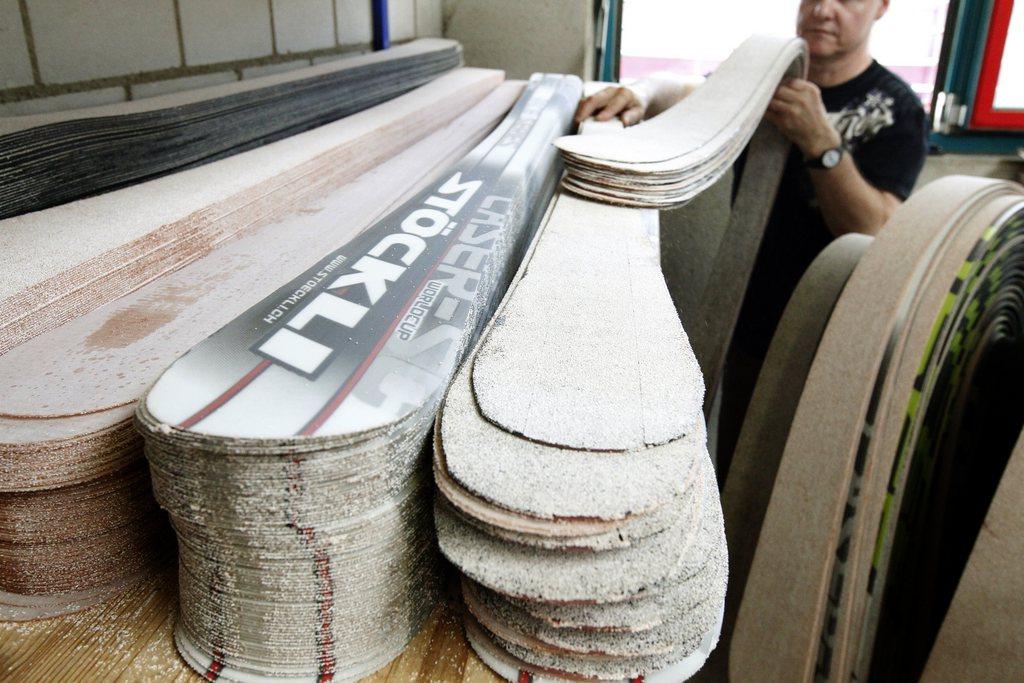
The last Swiss ski maker

Once upon a time, Switzerland was home to a number of ski manufacturers, but only one is still in operation today.
Established in 1935, the family-run Stöckli company in canton Lucerne is content to remain a small-scale business.
While their foreign counterparts flourish, Swiss ski makers are falling by the wayside.
When people flock to the Alps to glide down the slopes this winter, they are likely to be using Austrian, French, German, Slovenian or American skis.
Even the Swiss themselves do not appear to favour locally-made skis – only one in ten buy Stöckli products.
Switzerland is nonetheless the company’s biggest market, with two-thirds of sales generated at home. Most of the remainder are sold in the United States.
Quality over quantity
But Sepp Odermatt, commercial director at Stöckli, does not appear to be concerned about the low volume of sales.
“We could easily produce 100,000 or 200,000 pairs per year and export them.”
But, he says, Stöckli limits itself to a maximum annual output of 45,000 pairs.
“We have total control on our margins,” Odermatt continues, “and our focus is not mass production.”
This philosophy, says one of Switzerland’s former slalom stars, Walter Tresch, ensures that Stöckli can retain control over its operations.
“Stöckli makes niche products and sells them in their own shops, which allows them to stay completely autonomous,” says Tresch, who is now a consultant to the German ski maker, Völkl.
Too small
Tresch says Swiss ski manufacturers – which once included such household names as Attenhofer, Authier, Schwendener and Streuele – suffered in the 1980s as a result of structural limitations.
“Producing only several thousand pairs per year, the Swiss ski manufacturers simply couldn’t compete [with their larger rivals],” Tresch says.
Few companies were able to avoid the crisis that hit ski makers before the boom brought about by the arrival of snowboarding and the carving style of skiing.
“The big makes were still led by the generation of pioneers. They were stuck in the past and didn’t modernise quickly enough,” recalls Tresch.
But, unlike their European counterparts, the Swiss manufacturers did not receive help from banks or foreign investors to help them weather the storm.
World cup
For Stöckli, the Ski World Cup forms an essential part of the company’s strategy.
“We spend as much money on marketing, advertising and public relations as we do on research and development,” said Odermatt.
Over the past ten years, the race results have proved vital to the label’s success.
The manufacturer has secured a reputation in the downhill categories, thanks in part to four World Cup victories by Stöckli users, Urs Kälin and Didier Plaschy.
Stöckli’s hopes currently rest on Swiss ski star, Ambrosi Hoffmann, who came fourth in the 2003 World Championships in St Moritz.
Stöckli is based in Malters, in canton Lucerne.
The company’s founder, Josef Stöckli, started making skis in 1935, as a hobby.
In 1967, the skis were sold in sports shops for the first time.
Stöckli skis are now sold through 8 Stöckli branches and 24 sports shops in Switzerland.
Skis only make up a third of Stöckli’s turnover. The company also makes clothing, shoes, ski bindings and bicycles.

In compliance with the JTI standards
More: SWI swissinfo.ch certified by the Journalism Trust Initiative




























You can find an overview of ongoing debates with our journalists here . Please join us!
If you want to start a conversation about a topic raised in this article or want to report factual errors, email us at english@swissinfo.ch.